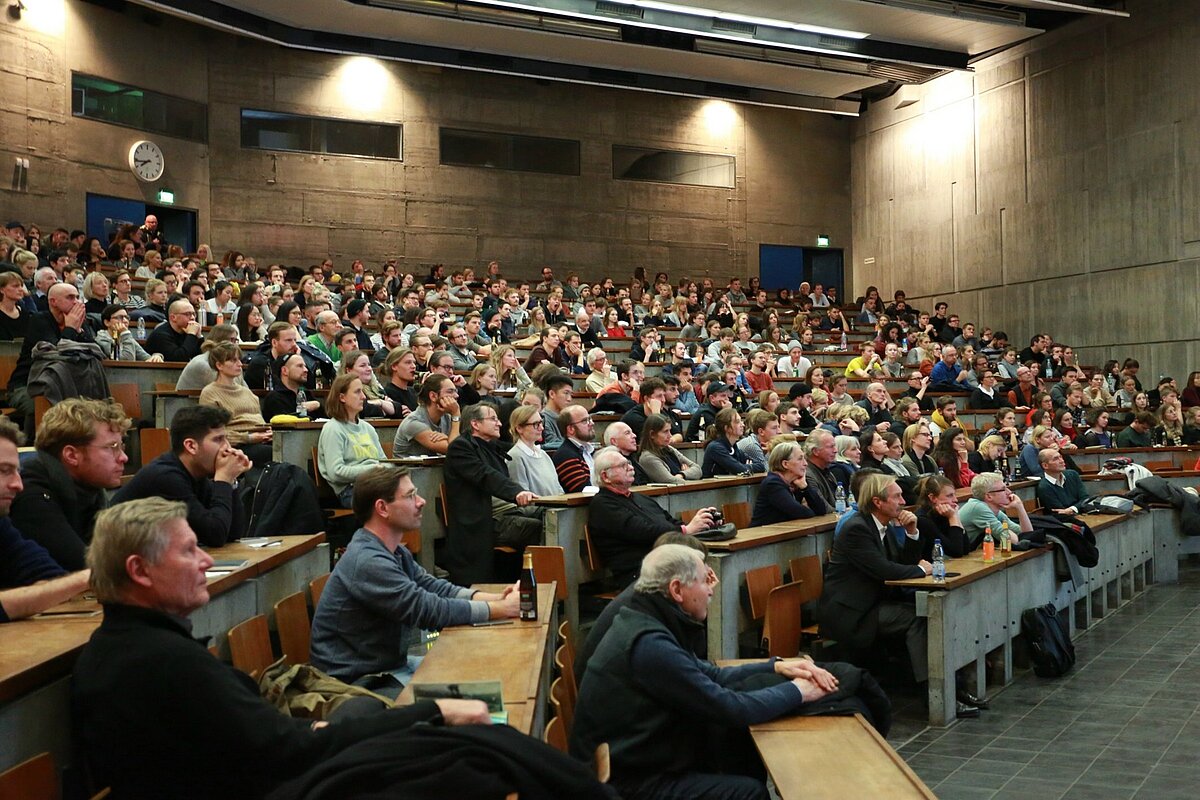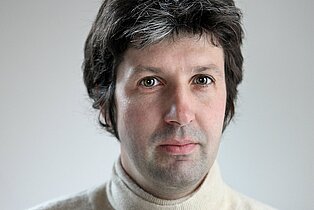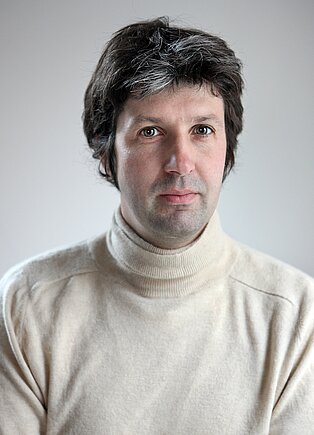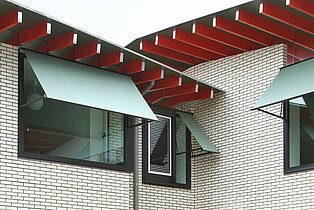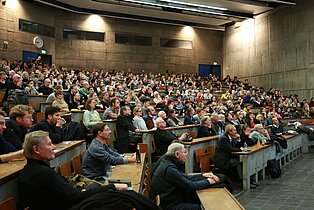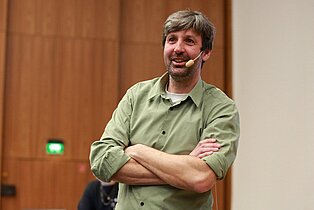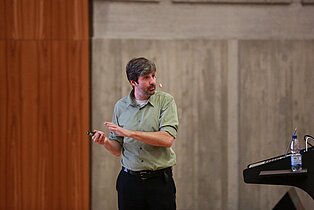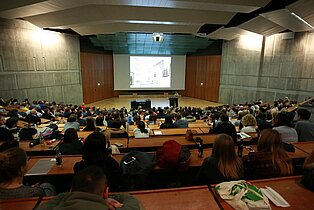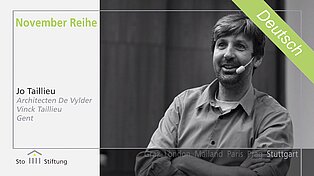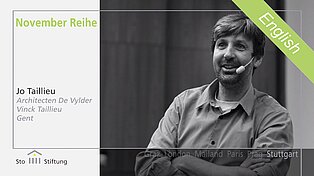Review | Jo Taillieu at the November Reihe 2018 in Stuttgart
For the third lecture of the November Talks, Belgian architect Jo Taillieu was invited to speak. In 2010, he founded the De Vylder Vinck Taillieu architecture association, creating a new access point to the profession. The work of Jan De Vylder, Inge Vinck and Jo Taillieu focuses heavily on the adaptation of existing buildings in a way that challenges conventions in a playful manner.
In his opening comments, Jo Taillieu explains his guiding principle as an architect: “It is important to assimilate what is already there, that which already exists; to discover things that are already there, and that you no longer need to go and find”. In his richly illustrated lecture, Taillieu went on to explain different approaches, including items of furniture, such as the reinterpretation of a shelving unit by Eames. The work of De Vylder Vinck Taillieu is very heavily involved in the process of reinterpretation. This conceals a simple principle: You start out with what exists, and you interpret it in a fresh way. The projects illustrated are almost all founded upon conversion projects - from house to house up to conversion into an entire residential block. In all of this work, Taillieu always emphasises that it is important to achieve an encounter between existing structures and new constructions, and to establish a dialogue between them.
With two drawings by the famous conceptual artist Sol LeWitt, the architect outlined the philosophy of his office. In the late eighties, the artist was involved in work on occupied houses, such as the entrance to a house of multiple occupancy, an HMO, in Gent. The point of the story is that, a few years later, an electrician installed an intercom system right in the middle of a wall mural by Sol LeWitt. However, as Taillieu’s photography illustrated to comic effect, this craftsman clearly had an appreciation for the work of art, and laid his cables very accurately. This anecdote served Taillieu as an introduction to another project: A bus stop in Austria - subject matter previously unknown to this Flemish architect. Unlike most of the projects in which his office got involved, this project simply stipulated the location but gave no guidance whatsoever as to how to go about it. Nothing at all to build upon or to redesign. In this case, the conceptual stage of the process was a more radical one than usual: they chopped up their own exhibition catalogue of monochrome illustrations of Sol LeWitt’s pyramids and began to fold these snippets into small models. The bus stop was created from a sheet of metal about 1 cm in thickness, the sides of which were painted in various shades of grey. This colour scheme matched the black and white reproduction of the otherwise colourful Sol LeWitt painting. By drawing a comparison between the bench seat for passengers waiting at the bus stop with the door bell system in the first example, Taillieu concluded his parable.
With his lecture, the architect underlined that you really need to see what exists on location before setting out to destroy it. That you need to take it on board, and preserve things that genuinely are present there. Sometimes, you can even save time and money in the process. As these projects illustrate, it is evident that these interventions are always accomplished with a fine measure of charm and sensitivity. The same is true of yet another example, one involving the conversion of a listed industrial building into office premises for an advertising agency. A long corridor was de-materialised by replacing the existing wall with a translucent one. This created new opportunities and a lighter and more communicated atmosphere. This project also showcases the great care taken in marrying office premises with the existing structure: The architects discovered old murals behind the cladding panels and wallpaper covering the walls. The hallmark colour scheme that this laid bare in each of the rooms was then used to identify the interventions they had made in the structure, creating a distinctive aesthetic and a balance between new and old. With its structures, De Vylder Vinck Taillieu demonstrates how architecture can look when situated beyond the world of norms and conventions.
Interview with Jo Taillieu
Find the Video-Interview on our YouTube-Channel.


